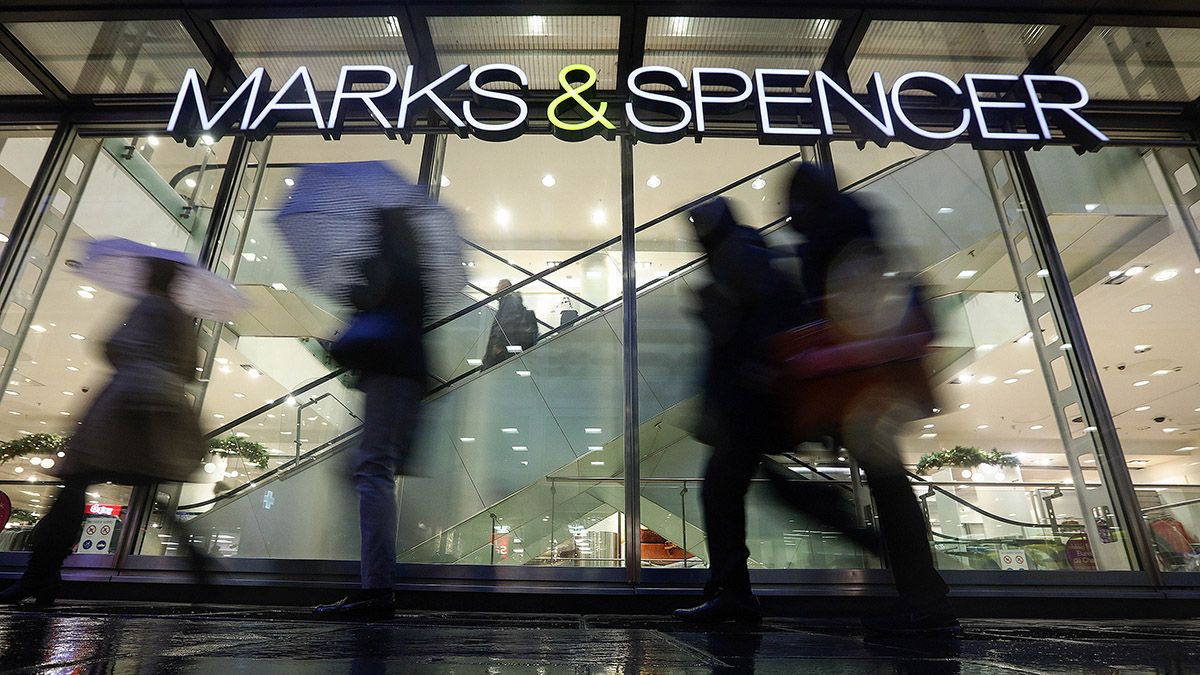
The Marks & Spencer share price has been in a slow decline for several years now, as management have tried and to large extent failed to grapple with the task of turning around a general merchandise operation.
M&S has fallen between the cracks of keeping its existing demographic happy, while also appealing to a younger breed of shopper, who chooses to shop at the likes of Primark or some of the more stylish boutique brands, as well as the likes of Next, who have a much more efficient online operation.
M&S share price plummets to record lows
This decline in the M&S share price eventually resulted in it being dropped out of the FTSE 100 towards the end of last year, before the shares hit new record lows of 74p in the middle of March. We’ve seen a modest rebound in the M&S share price since then, but the road back is likely to be a tough one, given its problems predated the onset of the coronavirus pandemic, as well as the fact that it occupies a position as a cross between a general retailer and to a lesser extent, a food retailer, at a time when most of their stores like a lot of other retailers are closed.
In April, management did take steps to shore up the balance sheet by cancelling the dividend for next year, thus saving £210m straightaway. The food hall side of the business has managed to stay open, which has helped cushion the blow from its other closed stores. Full-year food sales saw a rise of 1.9%, while clothing and home sales fell 6.2%. In Q4, this fall was even starker, with a decline of 13.8%, which is not really a surprise given the lockdown, while Q4 food sales climbed 4.6%.
Writedowns cause profit to fall 20%
Full-year revenue came in at £10.18bn, with a pre-tax profit of £403.1m, slightly below estimates of £420m. However, after taking a Covid-19 writedown of £52m for March, and writing down the value of its stock by £145.3m, as well as cutting costs by £67.5m, this number dragged the profit number down to £67.2m. This was still a 20% decline from last year
Food proved to be a particular outperformer with increased sales even before Covid-19, with operating profit rising 11.2% before adjustments. The Ocado deal is already reaping rewards, with a £2.6m profit for the 7 months to 1 March, and as the synergies increase is likely to improve further.
The decision to cancel £100m worth of spring and summer wear last month has turned out to be a prudent move given recent store closures, and will help ensure it doesn’t have too much surplus of unsold stock when stores finally reopen, while government help is expected to unlock another £222m, with the job retention scheme expected to account for £50m of that.
In terms of the outlook, core assumptions for Covid-19 are for a 70% decline in revenue in UK clothing and home for the four months to July, and only a gradual return to normal by February 2021. In the UK, food estimates are for a 20% decline in revenue for the same period. In terms of liquidity, overall drawings in respect of the crisis are expected to come in between £300m-£350m by the end of 2020-21.
Never the same again strategy
As far as the new 'Never the Same Again' turnaround strategy is concerned, the focus appears to have shifted much more towards online with the Ocado tie-up being at the centrepiece of it.
Some 6,000 M&S lines will be added to the Ocado food range in time for the September switchover, as the company ramps up its food offering, while at the same time adding 1,600 clothing and home products per year, so that the Ocado retail platform not only offers food but a wholesale online retail experience. The autumn range will also be launched in September with 850 lines made available.
Changes at managerial level are also set to be brought forward, with a smaller and more flexible management structure at board and store level, using technological solutions to simplify and speed up processes.
As numbers go these could have been a lot worse, and it is clear that M&S reacted quickly to the pandemic. The decision to cancel some of its summer stock was a shrewd move, while the dropping of the dividend, while painful was also necessary. It is clear that the Ocado deal will be at the core of its turnaround strategy, and early indications do look promising.
It remains to be seen whether this turnaround strategy will be any more successful than the previous ones it has tried since 2016. It certainly has the platform now; the bigger question will be whether it has the products that will attract the customers to shop on its site. That is where its Achilles heel has been for the last four years, in terms of availability of stock. Early indications suggest that investors like the look of it, with the M&S share price higher in early trade.
Disclaimer: CMC Markets is an execution-only service provider. The material (whether or not it states any opinions) is for general information purposes only, and does not take into account your personal circumstances or objectives. Nothing in this material is (or should be considered to be) financial, investment or other advice on which reliance should be placed. No opinion given in the material constitutes a recommendation by CMC Markets or the author that any particular investment, security, transaction or investment strategy is suitable for any specific person. The material has not been prepared in accordance with legal requirements designed to promote the independence of investment research. Although we are not specifically prevented from dealing before providing this material, we do not seek to take advantage of the material prior to its dissemination.






















